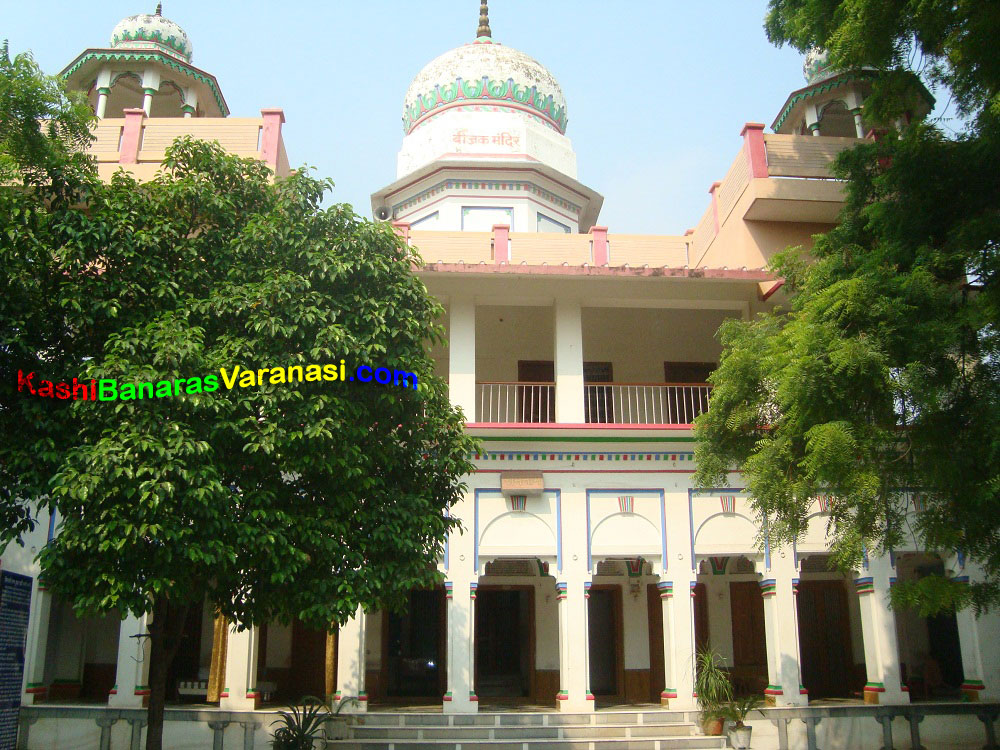Varanasi is considered one of India’s most beautiful cities. The city’s spiritual power and beauty is unmatched by almost any other place in India. The Ghats along the river, the old temples, and the great religious festivals make Varanasi a true treasure of India. The old buildings, hand woven textile art, and the bustling atmosphere of the markets, make it a special place to explore. Varanasi is a place with true Indian soul, and its undying beauty is worth experiencing at least once in a life time.
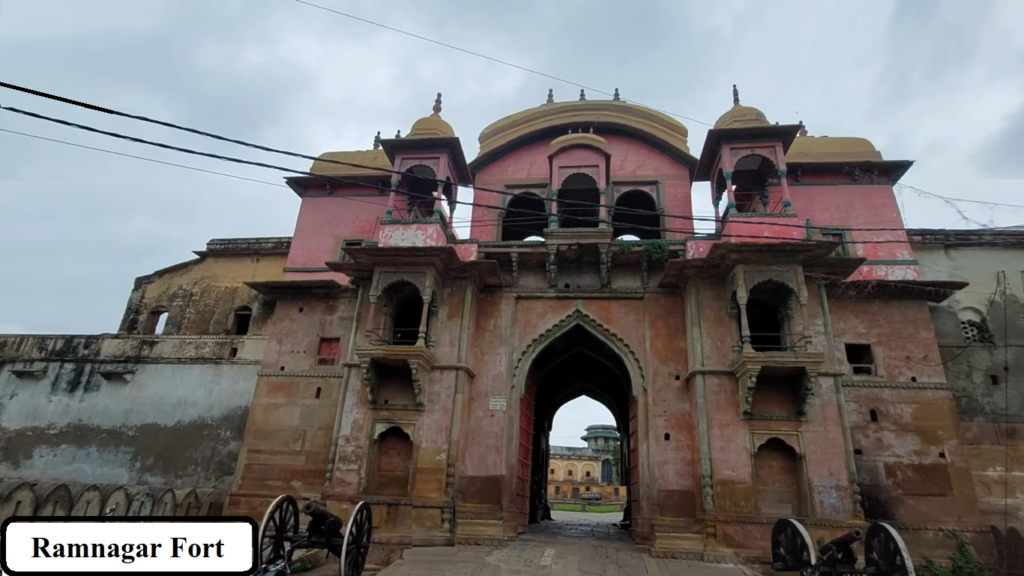
The ancient city of Varanasi is home to a large number of majestic monuments, but none quite as impressive as the Ramnagar Fort. The Ramnagar Fort is an architectural marvel that stands proudly in Varanasi. It holds within it a glorious history and culture that fascinates thousands of visitors who come here each year. A visit to the fort is a must for anyone who is looking to gain an insight into the past of Varanasi. About 14 kilometers from Varanasi, on the other side of the Ganges, is where you’ll find the fort of Ramnagar.
Retrace the History of Ramnagar Fort
This fort-palace was constructed in the 18th century by Maharaja Balwant Singh. In ancient times, it was believed that Veda Vyas lived and did meditation at Ramnagar during the time of the Mahabharata. This fort was constructed as a tribute to the wise man. However, some of the writing on the fort’s walls appears to be from the 17th century. Ramnagar received its name because numerous plays were performed in the 18th century based on the biography of Lord Ram. Before that time, locals referred to the area as Vyas Kashi.
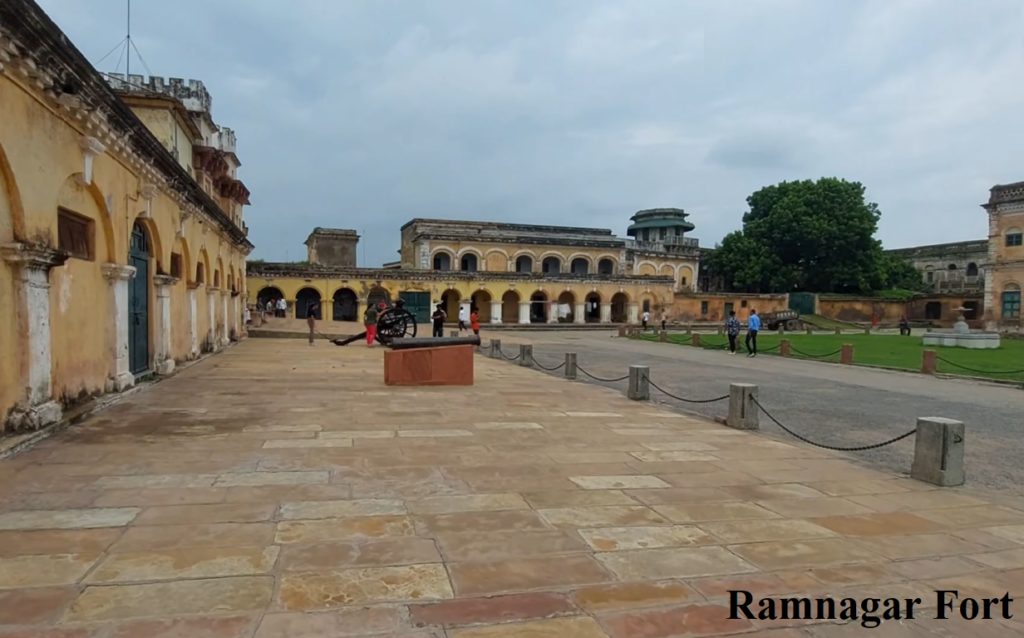
Kashi Naresh and his family occupied the fort, and he subsequently constructed numerous temples there. The fort is now open to visitors after the monarchy was overthrown. The royal family has maintained their residence within the fortress. Anant Narayan Singh, the current king, resides in the palace. The king’s personal rooms are prohibited to visitors.
Exploring Ancient Architecture of Ramnagar Fort
The Ramnagar Fort has been around for centuries and was built by Kashi Naresh (King of Varanasi). It served as the royal residence and court of the King of Varanasi. Chunar sandstone, which has a pale yellow color, was used in the construction of the building. The fort has been built on higher ground, which is above the flood level. The fort includes two white towers which can be reached by climbing a few steps. When the Maharaja is in his palace fort, the flag is raised to signal his presence.
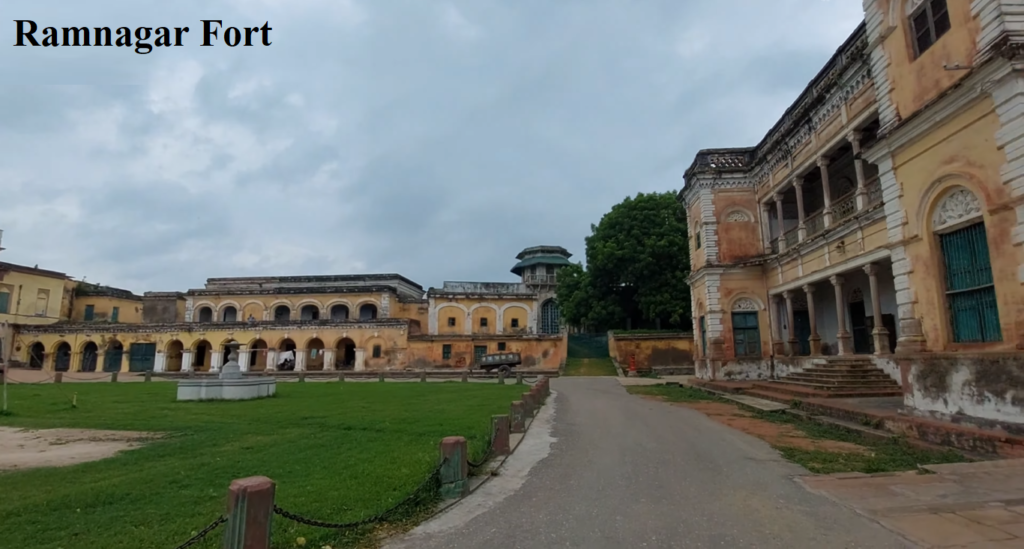
The Ramnagar Fort is a perfect example of Mughal-inspired architecture. The fort is characterized by its majestic facade and large courtyards. All of the buildings are surrounded by water, which was built to prevent enemies from attacking the fort. The fort’s shine may have faded, but it’s still a beautiful building. Located on the opposite side of the Tulsi Ghat, the fort is an integral part of the city’s rich history. It is a must-visit for anyone who is fascinated by the glorious legacy of India.
Witnessing the Magnificent Sights of Ramnagar Fort Museum
Ramnagar Fort is an impressive sight in the city of Varanasi in Uttar Pradesh. People say that Ved Vyasa, the author of the ancient Indian epic Mahabharata lived in Ramnagar and did meditation there, so the fort was built in his honor. The courtyards overlooking the river are the perfect place to enjoy a peaceful sunset or sunrise while taking in the majestic views. The fort and palace are popular outdoor filming locations due to their magnificent location on the banks of the Ganges.
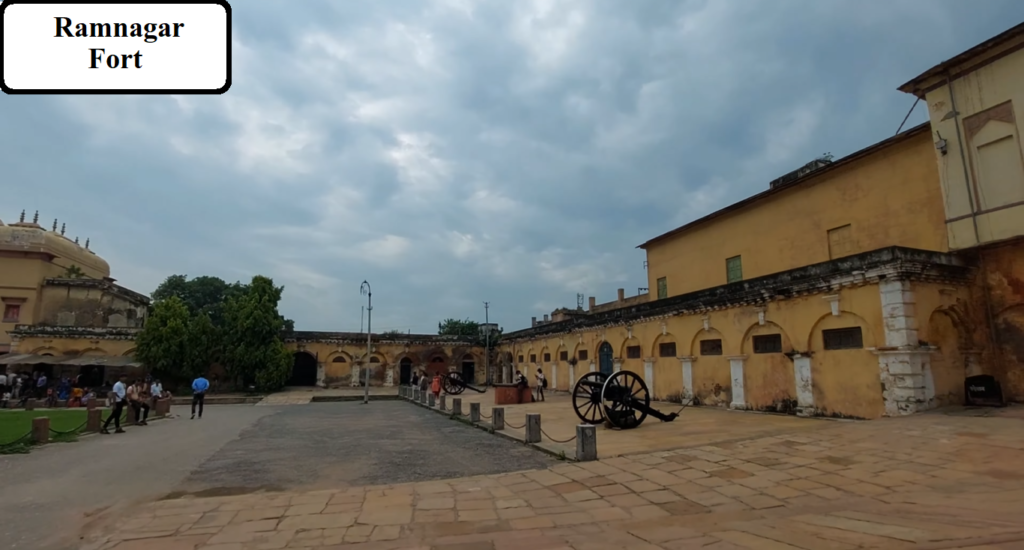
The fort is filled with numerous antique and treasures that were left behind by the past rulers of Varanasi. The historical objects range from weapons, antiques, paintings and other things. The uncommon astronomical clock displays the current month, week, day, and time in addition to the position of the planets, moon, and sun. The armory is stocked with swords and historic guns from Burma (Myanmar), Japan, and other African countries. Temples dedicated to Durga, Chhinnamastika, and Dakshin Mukhi Hanuman can all be found there. The fort boasts a great historical significance and is a must-visit for any tourist looking to explore the various hidden gems of the city.
Best Time to Visit Ramnagar Fort
Taking a boat to the fort is a must-do. The fort can be reached by boat across the river during the monsoon months of July, August, and September. The fort can be reached by boat in about an hour from Dashashwamedh Ghat. Many events will be held within the fort over the months of January and February. This month is perfect for tourists who wish to take in the local culture. A major celebration named Raj Mangal is also celebrated in the month of Falgun in Ramnagar Fort. Apart from this, there is also a procession of boats, dancing and singing.
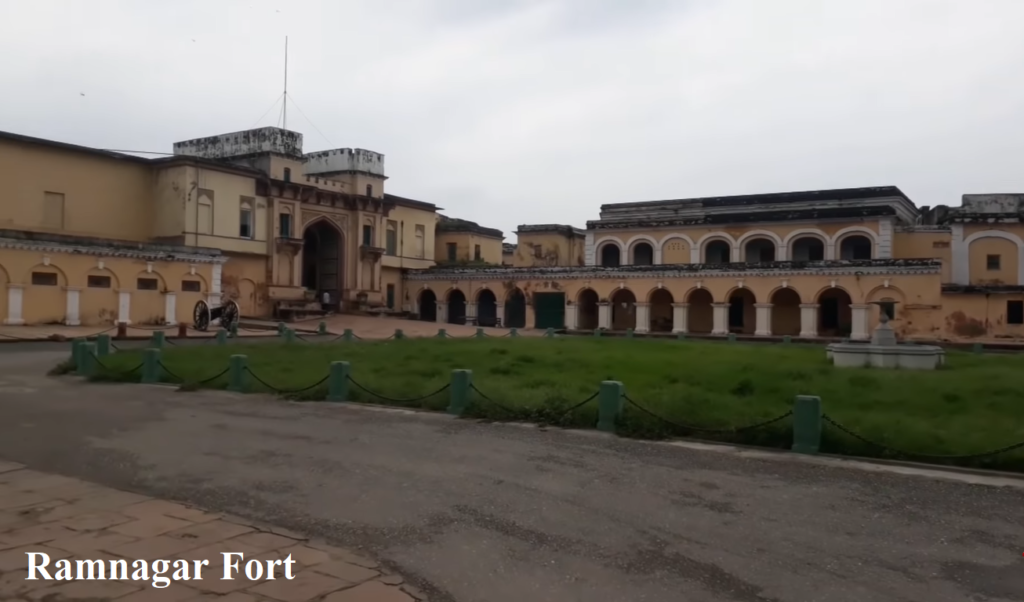
Ramnagar Fort is well-known throughout the country for its ten-day Ramlila celebration. People travel long distances to see the Ravana burning here. The Ram Leela festival, which takes place in the months of October and November and features recreations of key moments from the epic Ramayana, gives the fort palace its most colorful appearance of the year. The Maharaja continues the family custom of riding a decorated elephant at the front of the path to the month-long Ram Lila drama festival held in the streets behind the fort.
Tourists can plan their tour to the Ramnagar Fort during these months to make most of their visit and make the journey memorable.
Timing and Entrance Fee
The fort is accessible daily from 10 AM to 5 PM, with the exception of the Holi and Diwali holiday. The fort is accessible daily, including Sundays and holidays. There are no eating options within the fort. There is a popular “Lassi” (sweet curd drink) shop just outside the fort. There is a minimum entry fee for entering the fort. For Indians, whether adult or children, the fee is 20 INR per person and for foreigner the fee is 150 INR. Photography is not permitted within the fort’s museum, which has a good collection.
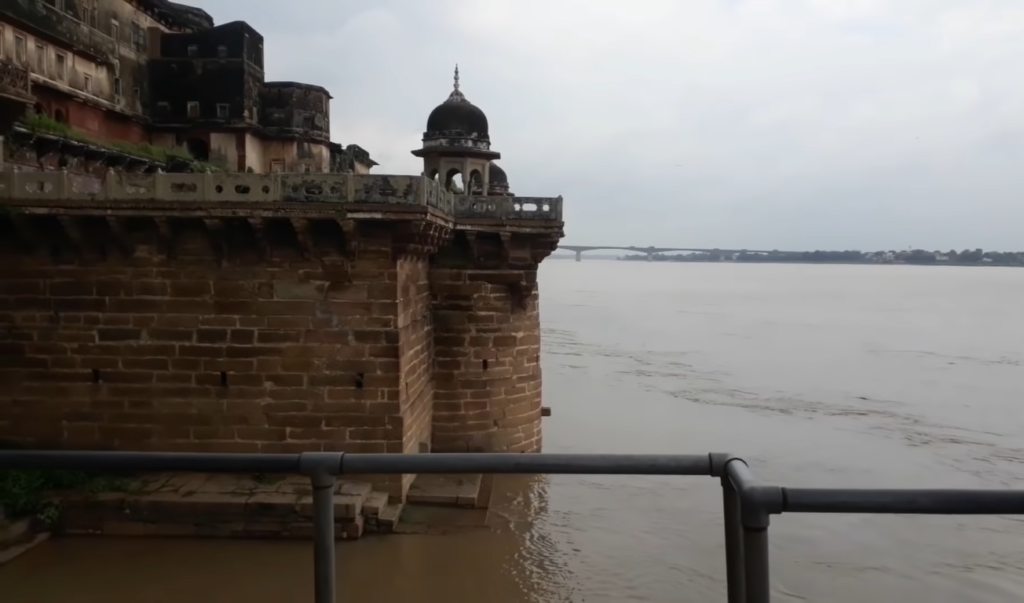
A Guide for Visiting Ramnagar Fort
Ramnagar Fort is situated in Varanasi’s Ram Nagar at Kila Road Crossing. It stands directly across from Tulsi Ghat. You can reach the fort through different means of transportation.
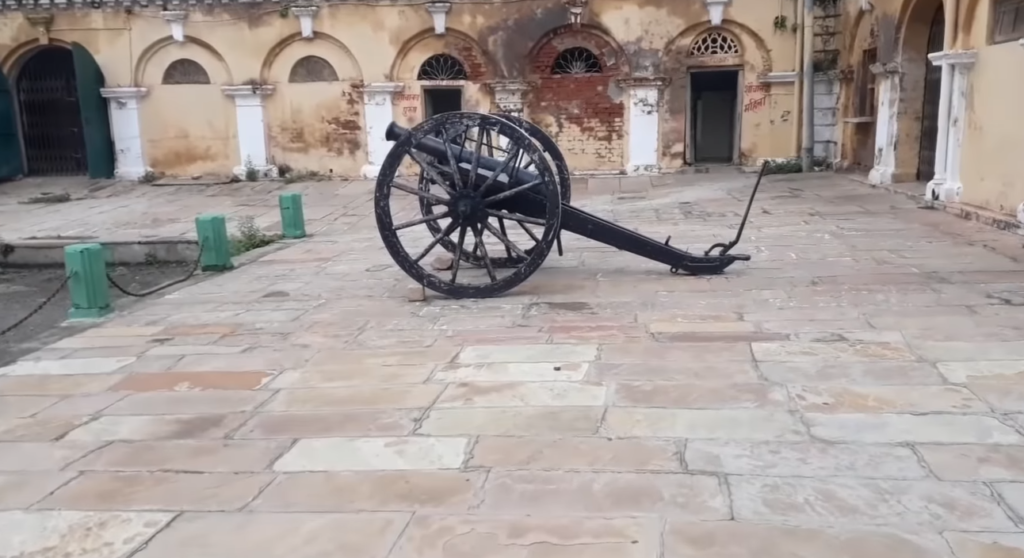
By Airways: Lal Bhadur Shastri International Airport is the nearest airport to reach Ramnagar Fort. It is about 33 km from the airport. Visitors then have to take a cab or bus to reach the fort.
By Roadways: Tengra Mod Bus Stop is the closest bus stop to Ramnagar Fort. The fort is about 2-2.5 km from this bus stop. All buses stop here, making it simple to travel to the fort via bus.
By Railways: Varanasi Junction railway station is 9.6 km away from the Ramnagar Fort. From Banaras Railway Station, Ramnagar Fort is about 8.5 km. You can reserve a vehicle from here to get to the palace.
FAQs on Ramnagar fort
Ans. The Ramnagar Fort has a collection of royal items, including old cars, palanquins, swords, guns, ivory work, and clocks. The fort is built in the Mughal style, with carved balconies, open courtyards, and beautiful pavilions.
Ans. The current resident of the fort is Anant Narayan Singh. He is also called the Maharaja of Benares, even though this title is no longer used since 1971. The fort-palace was built by Maharaja Balwant Singh in the 18th century.
Ans. The fort is made of red sandstone and has a temple and a museum inside. The temple is dedicated to Ved Vyasa, who wrote the Mahabharata. The museum at Ramnagar fort has a collection of old cars, palanquins, swords, guns, ivory work, and antique clocks.
Ans. Ramnagar Fort is a beautiful building on the side of the Ganges River in Varanasi. It was made a long time ago by a ruler named Maharaja Balwant Singh. The fort is made of red sandstone and looks like the buildings from the Mughal Empire. When it’s Dussehra, the fort and the area around it look really pretty and it’s a great time to go see it.
Ans. You can’t take pictures inside the museum, but you can take them outside, like on the fort and by the bank of river.

